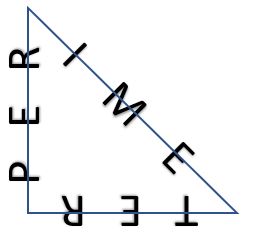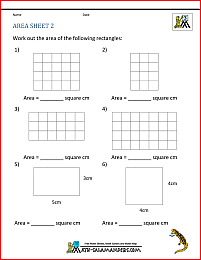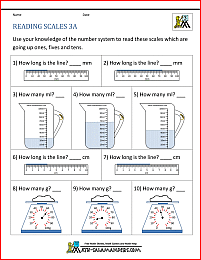- Home |
- About |
- Contact Us |
- Privacy |
- Newsletter |
- Shop |
- Donate
Perimeter of Rhombus

Welcome to our Perimeter of Rhombus support page.
We will explain how to find the perimeter of a rhombus and show you some worked examples.
We also have some worksheets so that you can practice this skill.
Quicklinks to ...
Perimeter of Rhombus support page
- Perimeter is the distance around the outside of a shape.
- It is measured as a length and can be in a range of units such as cm, inches, feet, miles, etc.
When we are trying to find the perimeter of a rhombus, we use the geometric properties of a rhombus to help us.

A rhombus is a 4 sided polygon with all sides equal length. It's opposite angles are also equal.
The fact that all 4 sides are equal in length helps us to find the perimeter.
To find the perimeter of a rhombus we simply need to find the length of one side and multiply it by 4.
If the length of the sides is not known and the shape is not drawn to scale, then we move on to the harder version lower down the page!
Perimeter of a Rhombus - Easier Version!
Examples - The Easier Version
Example 1
Find the perimeter of the rhombus below.

The rhombus has sides of length 5cm.
So to work out the perimeter we need to add up the length of all four sides.
4 x 5cm = 20cm
So the rhombus has a perimeter of 20cm.
Example 2
Find the perimeter of shape below.

This rhombus is actually a square, as the angles are all right angles.
To work out the perimeter we need to multiply the length of one side by 4.
So 6cm x 4 = 24cm.
So the rhombus has a perimeter of 24cm.
Example 3
Find the perimeter of shape below.

This rhombus has sides length 3 ½ cm.
To work out the perimeter we need to multiply the length of one side by 4.
So 3 ½ cm x 4 = 14cm.
So the perimeter of the rhombus is 14cm.
Example 4
Find out the length of the sides of this shape.

This rhombus has a perimeter of 32cm and we need to find out the length of the sides.
To work out the perimeter we need to multiply the length of one side by 4.
So 4 x side length = 32cm.
This means that the side length must be 32 ÷ 4 = 8.
So the length of each side of the rhombus is 8cm.
Perimeter of a Rhombus - Harder Version!
If we do not know the length of one of the sides of the rhombus and it is not drawn to scale then we will need to use other geometric properties and rules to help us.
If, for example, we know the perpendicular width and height of one of the sides (see image below) then we can use Pythagoras' theorem to help us.

If you look closely at the shape made by the perpendicular width (x) and the perpendicular height (y) and the missing side of the rhombus (h), you will see that it makes a right triangle.

You can see that the missing side (h) is the hypotenuse of the triangle made by the two shorter sides, x and y.
So to find the perimeter of a rhombus above we need to use Pythagoras' theorem to find the missing side - the hypotenuse - and then multiply the result by 4 to find the perimeter.
To find the missing side (h), we have to work out:
h = √ (x2 + y2)
So the final perimeter of the rhombus is:
Perimeter = 4√ (x2 + y2)
Examples - The Harder Version
Example 1
Find the perimeter of the rhombus below.

We know the perpendicular width and height of one of the sides so we can use Pythagoras' theorem to find the hypotenuse which is also the side of the rhombus.
Pythagoras' theorem says that the square of the two shorter sides (legs) on a right triangle is equal to the square of the longest side (the hypotenuse).
So if h is the longest side (or hypotenuse), then h2 = 62 + 82.
This gives us h2 = 34 + 64 = 100.
So h=√ 100 = 10cm.
So the length of one of the sides of the rhombus is 10cm, so we need to multiply this length by 4 to give the perimeter.
The perimeter of the rhombus is 4x10 = 40cm.
Example 2
Find the perimeter of the rhombus below correct to 1dp.

Once again, we know the perpendicular width and height of the side, so we can use Pythagoras' theorem to find the length of the side.
Pythagoras' theorem says that the square of the two shorter sides (legs) on a right triangle is equal to the square of the longest side (the hypotenuse).
So if h is the longest side (or hypotenuse), then h2 = 72 + 42.
This gives us h2 = 49 + 16 = 65.
So h=√ 65 cm.
So the length of one of the sides of the rhombus is √65 cm so we need to multiply this length by 4 to give us the perimeter.
The perimeter of the rhombus is 4x √65 = 32.2cm to 1dp.
Example 3
Find the perimeter of the rhombus below.

This time we have been give the total perpendicular width and height of the rhombus.
However, we only need to perpendicular height and width of one side, so we need to halve the measurements.
The perpendicular width of one side is 30cm ÷ 2 = 15cm.
The perpendicular height of one side is 16cm ÷ 2 = 8cm.
So now we have the information we need to help us find the missing side:

Pythagoras' theorem says that the square of the two shorter sides (legs) on a right triangle is equal to the square of the longest side (the hypotenuse).
So if h is the longest side (or hypotenuse), then h2 = 152 + 82.
This gives us h2 = 225 + 64 = 289.
So h=√ 289 = 17cm.
So the length of one of the sides of the rhombus is 17cm so we need to multiply this length by 4 to give us the perimeter.
The perimeter of the rhombus is 4 x 17cm = 68cm.
Perimeter of a Rhombus Worksheets
Sheet 1 is an easier sheet which involves measuring the sides of the rhombuses with a ruler and adding them up to find the perimeter.
Sheet 2 is an easier sheet which involves multiplying the length of each side by 4 to find the perimeter.
Sheet 3 is a harder sheet which involves using Pythagoras' theorem to find the missing side - with integer answers only.
Sheet 4 is a harder sheet which involves using Pythagoras' theorem to find the missing side giving answers to 1dp.
More Recommended Math Resources
Take a look at some more of our resources similar to these.
Perimeter Worksheets and Support
The perimeter worksheets are all graded in order from easiest to hardest.
Using these sheets will help your child to:
- work out the perimeter of a range of rectangles;
- find the perimeter of rectilinear shapes.
Area Worksheets
The area sheets are all graded in order from easiest to hardest.
Using these sheets will help your child to:
- work out the areas of a range of rectangles;
- find the area of rectilinear shapes.
All the sheets in this section support Elementary Math Benchmarks.
3rd Grade Measurement Worksheets
Here is our selection of measurement worksheets for 3rd graders.
These sheets involve reading scales going up in halves, ones, fives, tens, fifties and hundreds to find the length, weight or liquid capacity.
Using these sheets will help children to consolidate their counting and place value as well as learning to read and estimate using a simple scale.
Online Perimeter Practice
Another way to learn about 'What does perimeter mean' is through exploring shapes.
This online area and perimeter activity by toytheater.com will let you explore 'what does perimeter mean' through creating your own shapes.
The link below will open in a new browser window.
How to Print or Save these sheets 🖶
Need help with printing or saving?
Follow these 3 steps to get your worksheets printed perfectly!
How to Print or Save these sheets 🖶
Need help with printing or saving?
Follow these 3 steps to get your worksheets printed perfectly!
Subscribe to Math Salamanders News
Sign up for our newsletter and get free math support delivered to your inbox each month. Free seasonal math grab pack included.
Return to Perimeter Worksheets
Return to Measurement Worksheets
Return from Perimeter of Rhombus page to Math Salamanders Homepage
Math-Salamanders.com

The Math Salamanders hope you enjoy using these free printable Math worksheets and all our other Math games and resources.
We welcome any comments about our site or worksheets on the Facebook comments box at the bottom of every page.













New! Comments
Have your say about the Math resources on this page! Leave me a comment in the box below.